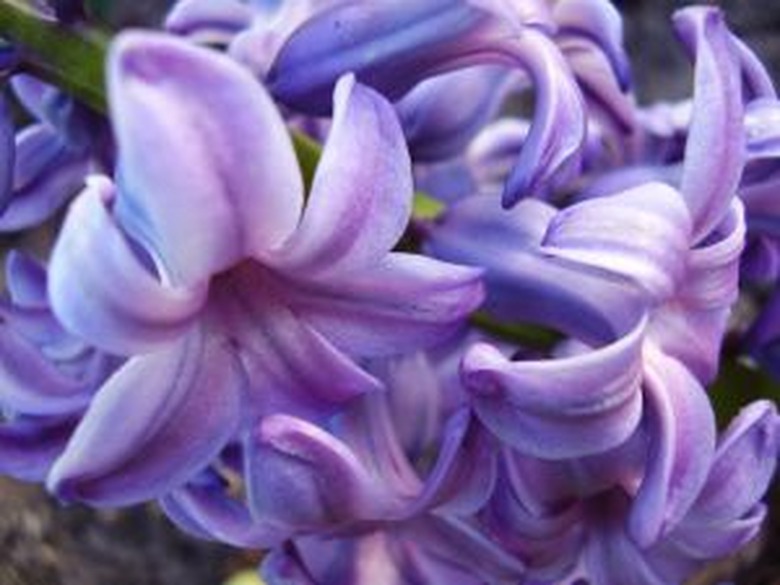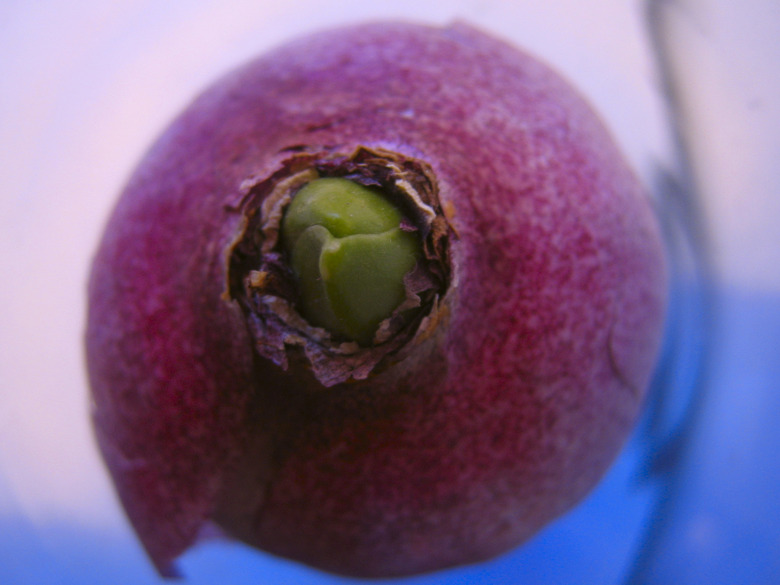How To Save And Store Hyacinth Bulbs
The hyacinth (Hyacinthus orientalis) is a spring flower grown from bulbs that keep on giving. Storing hyacinth bulbs properly after flowering allows for another year of fragrant blooms.
Grown most successfully in USDA plant hardiness zones 4 to 8, these hardy perennials are native to Eurasia, the Mediterranean and Turkey, and Hyacinthus orientalis is native to southwest Asia. It was brought to Europe in the 16th century.
Hyacinths offer a substantial fragrance punch and easily fill a room with their perfume, eliminating the need for synthetic room deodorizers. Like the crocus (Crocus spp.) and daffodil (Narcissus spp.), which grow in hardiness zones 3 to 8, and the tulip (Tulipa spp.), which is grown in hardiness zones 3 to 7, the hyacinth blooms in early spring, whether from indoor forcing or outdoor planting, with many blooming from recycled bulbs. All naturalize and return year after year.
Hyacinth Bulb Characteristics
The life cycle of the hyacinth flower begins with its bulb. Looking like a red beet, the bulb produces 4- to 6-inch-long leaves and the few flower spikes at its top result in the flower itself.
They contain oxalic acid, a poisonous repellent for woodland critters that causes skin irritation in humans, so wearing gardening gloves is suggested when handling the bulbs.
Warning
Hyacinth bulbs contain oxalic acid, a poisonous repellent for woodland critters that causes skin irritation in humans. So wearing gardening gloves is suggested when handling the bulbs.
Harvesting Hyacinth Bulbs
Once the brilliantly colored flowers of the hyacinth have started to turn brown and fall and the leaves start turning brown, leave the plant alone for at least six weeks after blooming, as it is now that the bulb absorbs the energy from the leaves that produces the following years' blooms.
Once the foliage turns yellow and has withered, you can harvest the bulbs or leave them in the ground. However, digging up the bulbs results in larger flowers the following year.
Whether flowering for the first time or starring in a repeat performance, the bulbs should be harvested for future use if they are in a container or left in the ground if planted in the landscape. Hardy hyacinth bulbs do need a period of cold temperatures before dormancy ends and flowering begins.
Preparing for the winter "cooling" begins before the first frost. The root system of the bulb needs to become established before the ground freezes. Once the bulbs are planted in the ground, it becomes a waiting game until spring.
Throw away any damaged bulbs and store the rest in a cool, dry place with a temperature below 60°F until they are ready to be planted in the fall. Forced bulbs need to be cooled for 10 to 12 weeks.
Forced Hyacinth Bulbs
For those who want to get a jump on spring flowering, "forcing" the bulbs by planting them in an indoor container results in early flowering of the potted hyacinths. If you want to enjoy your hyacinths in the winter, the process must begin in late summer or early autumn. Use your saved hyacinth bulbs for this process.
Storing Hyacinth Bulbs
With the bulb in your gloved hand, brush off the loose soil and find a shaded or dark place that ranges from 60 to 65°F. A cool, dry basement away from sunlight with low humidity is ideal. When storing bulbs, know that air circulation around the bulbs is vital. Don't layer them. Keep the bulbs away from fruit, as the fruit produces ethylene gas that hastens the ripening process.
Store spring bulbs in a container with drainage holes and surround them with potting soil or potting mix, peat moss, sand, perlite or vermiculite. If you only have a few bulbs, place them in a loose-knit sack, paper bag or mesh bag and hang them in a cool, sheltered area.
Tip
Air circulation around hyacinth bulbs when storing them is vital—so don't layer them. Keep the bulbs away from fruit, as the fruit produces ethylene gas that hastens the ripening process.
Planting Bulbs for Spring Flowering
Spring-flowering bulbs are planted in the fall just before the first frost. Bulbs prefer full sun, making site selection important to their growth and flowering. Good soil drainage helps prevent bulb rot and is vital to root development.
Test the soil for its pH and be sure it scales between 6 and 7. Introduce organic matter to stimulate and support root development.
Plant bulbs in the soil with the tip facing up. Do not cover the bulb completely with soil. Water once or twice during the winter months and after about 10 weeks, sprouts will appear, followed by blooms in three to four weeks.
Repeat the process at the end of the flowering season and replant for next year and next spring's flowers. The cycle will begin again.
References
- North Carolina State Extension: Hyacinthus orientalis
- Iowa State University Extension and Outreach: Yard and Garden: Forcing Hyacinth Bulbs Indoors During Winter
- North Dakota State University: Growing Fragrant Hyacinth Indoors
- Penn State University Extension: Plant Bulbs in the Fall for a Spring Celebration
- Clemson Cooperative Extension: Spring-Flowering Bulbs
- University of Illinois Extension: Bulbs & More: Planting & Care

